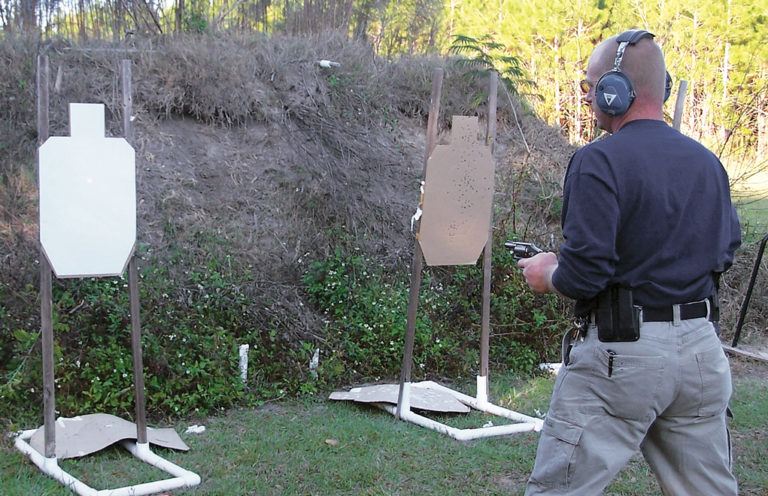
When it comes to concealed carry, there are lots of statements portrayed as facts that are, in truth, myths.
What are the concealed carry myths:
- A Good Shoot Is A Good Shoot
- Aim For Center Mass
- He Who Shoots First, Wins
- If You Can’t Do It With …
- Choice Of Equipment Doesn’t Matter
When friends and family find out that you carry concealed, you become their resident guru on the topic. In that role, part of your job will be busting myths they heard, often from trusted others. Their big brother or their Uncle George might have more credibility with them than you do yet, so you’ll need more than “take my word for it” to put them straight.
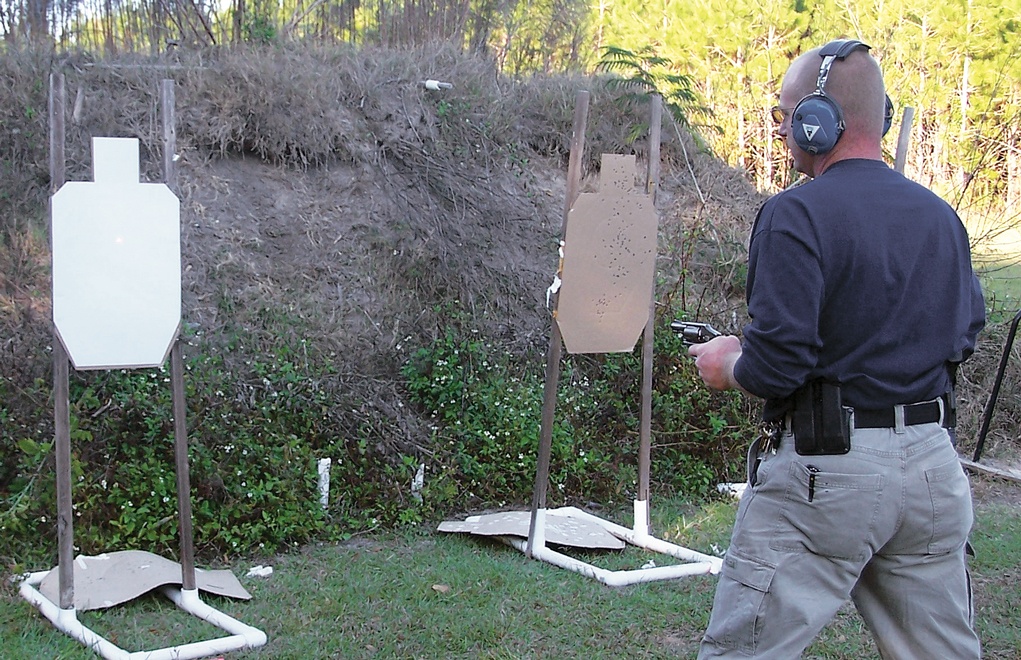
Hopefully, the following will be of some help when you, the resident Advanced Concealed Carrier, impart necessary reality lessons to those new to the discipline.
Five Myths Of Concealed Carry
Sometimes, what seems like good advice at the time is proven later to be not so great. The record shows that decades ago, when more adult Americans smoked than not, popular magazines carried ads in which physicians endorsed this or that brand of cigarette. Brand A was an excellent aid to digestion after meals, one doctor said. The menthol in Brand B was soothing to a sore throat, another physician opined.
Today, of course, we know better. Oncologists who’ve treated patients suffering from throat cancer will tell you that those old claims are bunk. They sure sounded authoritative back in the day, though. Some advice on gunfight survival goes back to the same era. And some of it is just as suspect. Let’s look at a few examples.
Myth #1: A Good Shoot Is A Good Shoot
In the old days, there was some truth to this. When it was reasonably clear that a good guy had shot a bad guy, the criminal justice system ruled it to be a justifiable action and things were pretty much done with. Oh, there might have been a lawsuit here or there, but it was not common to see a huge wrongful death lawsuit levied on the shooter after a fatal use of force in legitimate defense of oneself or others.
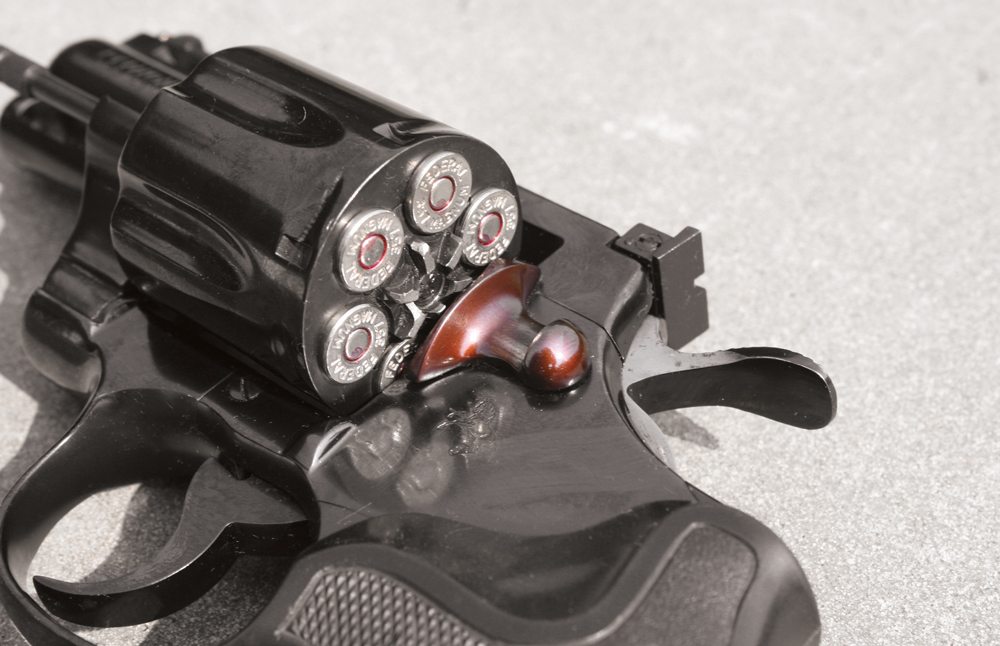
Slowly, things changed. The gun control movement gained traction in the 1960s after the assassinations of President Kennedy, Dr. Martin Luther King, Jr. and Senator Robert Kennedy. This time, the mainstream media went in the same direction, gathering a huge momentum that remains today.
From the nation’s major TV networks and the influential big city newspapers and national news magazines, to the groves of academe, it became popular to treat guns and the people who owned them as an embarrassing, dangerous manifestation of low-class stupidity. This also applied for ordinary people who picked up a gun in legitimate self-defense. It was as if the journalists’ style guide automatically decreed that the term “vigilante” be applied to those who saved themselves and others from being victimized.
Today, a good shoot isn’t a “good shoot” until the authorities say so and the last false allegation of a “bad shoot” has been decisively stamped out. It’s a predictable aftermath that must be prepared for, just as the gunfight must be prepared for well beforehand.
Myth #2: Aim For Center Mass
This was a poor choice of words even in the old days, and that’s still true. If you think about it, the center of mass on a standing human is somewhere in his abdominal area. A bullet there may or may not prove fatal later, but it’s not very likely to instantly disable a violent man now, and the latter of course is what we need to ensure the survival of the good guys.
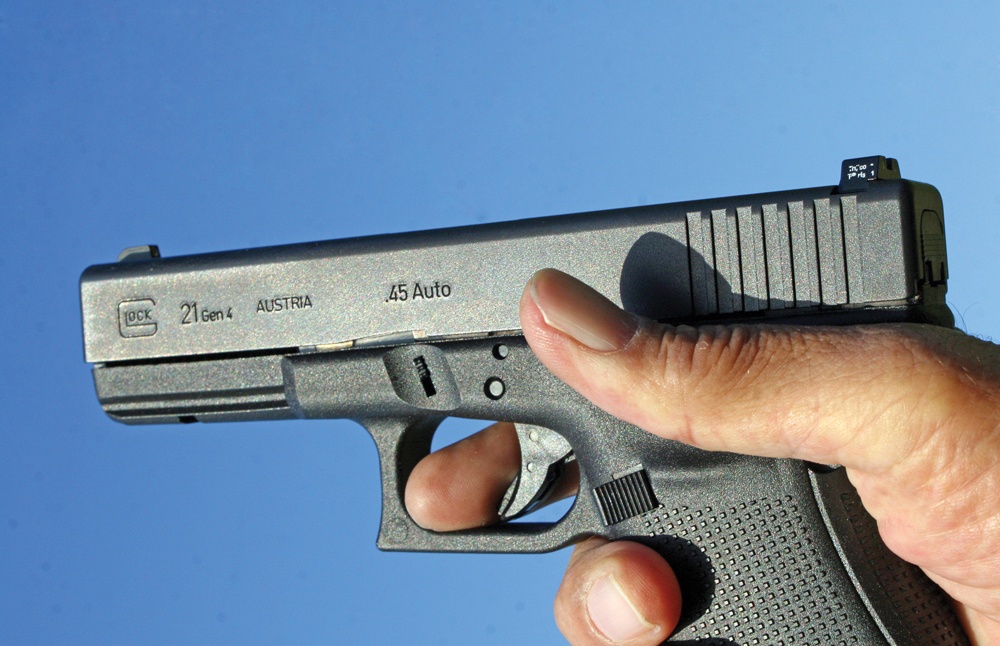
The way to stop a criminal from shooting at you is to deliver your bullet to a part of the body he needs in order to keep shooting at you, and to make that part of his body stop working. I’ve told my students for decades that they should have a copy of Gray’s Anatomy right next to their shooting manuals.
Read Dr. Jim Williams’ excellent book Tactical Anatomy. An ER physician with extensive experience treating gunshot wounds and intensive firearms training himself, Dr. Williams details the proper points of aim from various angles when the object of shooting is to render a homicidal criminal incapable of carrying out his murderous actions.
Myth #3: He Who Shoots First, Wins
This is untrue on multiple levels. Gunfights are not won by the guy who makes the first loud noise. They’re not even won by the first guy who gets a hit. In Springfield, Missouri, in the 19th century, Wild Bill Hickok met Dave Tutt in the town square, in what may have been the only time in the Old West that two men actually did have a “walk and draw” contest in the middle of the street. Tutt panicked and opened fire on Hickok when they were some 70 yards apart. His bullets missed. Hickok coolly stood his ground, aimed carefully and ended the fight by putting a .36-caliber round through his antagonist’s heart.
In the more famous gunfight at OK Corral, Wyatt Earp’s brother, Morgan, was shot down by a bullet that went across his shoulders and chipped one of his vertebrae, and Doc Holliday received a glancing wound to the hip from Frank McLaury’s Colt .44. A moment later, McLaury fell dead, killed instantly when Holliday shot him in the chest and the wounded Morgan Earp almost simultaneously shot him in the head.
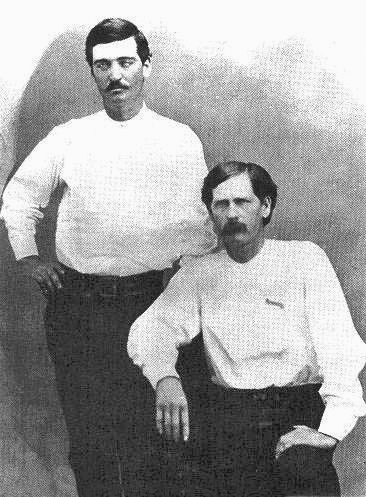
Even severe wounds may not seriously disable a committed combatant. I’ve had the privilege of meeting many hero cops who’ve survived hellacious gunfight injuries and gone on to prevail. One is Stacy Lim of the LAPD. She was shot in the heart with a .357 Mag revolver at the opening of her encounter. She returned fire with her Beretta 9mm, killing her antagonist with four solid hits out of the four she fired. She recovered to return to full duty, and today is one of the nation’s most respected police firearms instructors.
Another is Officer Jared Reston of Jacksonville, Florida. He was shot in the face at point-blank range by a gunman armed with a .45 ACP who then fired six more bullets into Reston when he fell. Jared returned fire from the ground with his Glock .40. He killed the assailant and recovered to return to patrol and SWAT duty.
These were the good guys and gals. But the bad guys can be just as resilient, and we would all do well to remember that it took Stacy four dead-on hits to drop her opponent, and Jared had to shoot his would-be murderer seven times before the guy stopped trying to kill him.
Myth #4: If You Can’t Do It With …
“If you can’t do it with six (or five), you can’t do it at all.” There are a whole lot of people who wouldn’t have survived high-volume firefights if they only had five or six cartridges at the time. Let’s look at some of the shootouts we’ve already discussed.
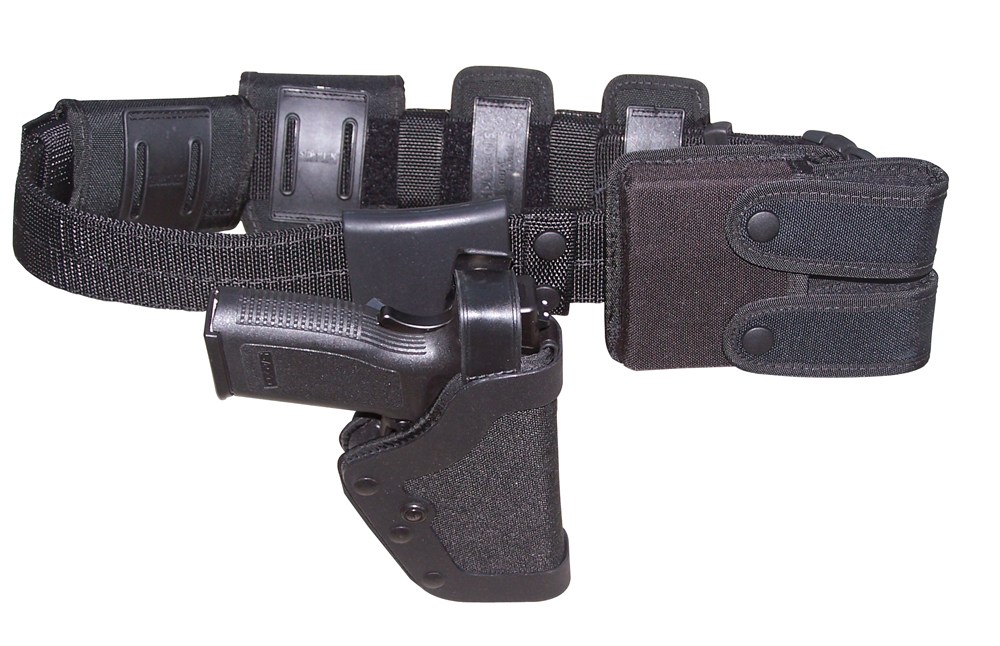
Hickok did indeed kill Tutt with a single shot — but he had a second Colt in his waistband to back up the first if more shots had been required. When Holliday shot Tom McLaury at the end of the OK Corral shootout in Tombstone, Arizona, it was his third gun of the fight. Holliday had already emptied a double-barrel shotgun (killing Frank McLaury’s brother, Tom), and a Colt SAA before drawing his backup Colt Lightning revolver to shoot Frank. Fast-forward to modern times: Officer Jared Reston, severely wounded, had to unleash most of the rounds in his 16-shot Glock 22 to finish his deadly fight in Jacksonville.
It happens to armed citizens, too. I’ve lost count of the shootings I’ve reviewed over the years where the good guys ran out of ammunition. Rich Davis fired all of the six shots he had and hit all three of the armed robbers he faced while delivering pizzas, but one of them was still up and running and able to shoot and wound him twice. That night in the emergency room, it occurred to him that there had to be something better than one’s own body to stop bullets with, and he was inspired to invent the soft body armor that has since saved thousands of police lives.
I spoke at two trials, one criminal and one civil, for an attorney who had to shoot a man who pulled a gun on him in his law office. His nine-shot 9mm was at slide-lock, having delivered nine solid hits, before his opponent slumped and died. He survived both the gunfight and the trials, but it had been terribly close because he had no more ammunition at all when the gun duel ended.
There are other reasons to carry spare ammunition. With a semi-automatic pistol, as many firearms instructors will tell you, a cardinal cause of malfunctions is a magazine problem. Often, this can only be rectified by ripping the bad magazine out of the gun and replacing it with a fresh one. This naturally requires a fresh magazine to be right there on your person.
Myth #5: Choice Of Equipment Doesn’t Matter
There aren’t a whole lot of gunfight survivors who will agree on that premise. A lifetime of studying these incidents has taught me that the choice of equipment is about fourth down on the list of priorities for survival. It is preceded by mindset, tactics and skill at arms. We all agree that a hit with a .22 beats a miss with a .44 Mag, and so on.
That said, though, you will be better served with a weapon you can shoot well at high speed, and with ammunition that hits hard on the receiving end. I’m not sure who first said, “No gunfight survivor has ever said that he wished he had less powerful ammunition or fewer shots available,” but that sage pretty much nailed it.
You definitely want hollow-point loads designed to expand in diameter and penetrate to optimum depths. Some people like to kid themselves that they’re saving money by buying non-expanding “ball” ammunition at cheap, generic prices. You’re only saving money if you’re getting adequate performance for less cost. I’m not aware of a single major police department in the United States still using ball ammunition in their duty handguns, even though they would certainly be motivated to cut costs. We are seeing police departments laying off cops, and even small towns disbanding their police departments, because of budget crunches. Why are they still paying premium prices for hollow-point ammunition? Because a very long history of gunfights has shown that it works more effectively to stop armed criminals more quickly.
Hollow-points are also safer for innocent bystanders, whether cops, security professionals or armed citizens fire them. The hollow-nosed bullet’s expansion slows it down and usually leaves it lodged in the opposite side of the opponent’s body and clothing, or lying on the ground a few feet behind him, spent.
A 9mm or .45 FMJ round can go through two bystanders and into a third deep enough to leave three innocents lying dead on the ground. Before you ignore that, go to FindLaw.com and look up the definition of “deliberate indifference.” Even a soulless sociopath would realize that this could sustain a criminal charge of manslaughter, and a civil suit for wrongful death or injury, and any good person with a three-digit IQ would realize that their own loved ones are the most likely “bystanders” to be present in a home-defense shooting.
Challenging Caliber ‘Norms’
It’s become popular on the Internet to claim that there is no difference between chamberings. That the 9mm, for instance, is equal to the .40 S&W or .45 ACP, bullet type for bullet type, in terms of “stopping power.” That is an argument that simply defies logic. A 9mm-diameter bullet weighing 147 grains is the same as a 10mm-diameter .40 bullet weighing 180 grains, or an 11.25mm-diameter .45 ACP +P bullet weighing 230 grains, when they’re all going within 50 feet per second of each other? Really? History, common sense and logic say otherwise.
The 9mm-diameter bullets, well-designed and loaded to higher velocities, can certainly give the larger calibers a run for their money. The best 9mm and .357 Mag or .357 SIG loads may well outperform lower-tech .45 ACP and .45 Colt loads in terms of relevant wound volume. The issue is more complicated than it sounds, but the bottom line is that there are more effective and less effective cartridges for defense use, and they’re not all created equal.
If you have to fight for your life with a firearm, I absolutely agree with Mark Moritz that “the first rule of gunfighting is, have a gun.” I’d rather you have a .380 — or, for that matter, a .22 — than no gun at all. I realize that my dress code and my occupation may allow me to carry larger hardware than you. At the same time, convenience and economy must be balanced with the fact that you already decided you needed to be armed, and you need to have a firearm adequate to the task if you are in fact involved in a gunfight.
There are certainly good reasons to use a 9mm instead of a .45. If the shooter is distinctly better at hitting with speed with a 9mm — or feels a need for more, smaller bullets rather than fewer larger ones in the same sized gun — we’re looking at good reasons to choose the 9mm. When I travel to other countries, I usually carry a 9mm simply because the ammunition is much more readily available there than the .40, .45, .357 SIG, etc. But if you’re going to choose a smaller-caliber gun, choose it for real reasons, not delusional ones that do not pass the tests of history, logic and common sense.
Common Sense
Personal and home defense aren’t just about the gun. The gun is simply one component of a much larger whole. Home security encompasses locks, alarms and hardened perimeters. Your family needs to have a plan for emergencies, whether that emergency is a house fire or a home invasion. Communications and emergency illumination are part of the package. A Neighborhood Watch program can be priceless.
The world of the defensive firearm is rife with myths, and only some of them have been dealt with here. Anyone who keeps a firearm for home defense, or lawfully carries one in public, needs to apply his or her own common sense. We are, after all, literally talking about life and death when we assess these matters.
Editor's Note: This article is an excerpt of Gun Digest Book of Concealed Carry, Volume 2.

Next Step: Get your FREE Printable Target Pack
Enhance your shooting precision with our 62 MOA Targets, perfect for rifles and handguns. Crafted in collaboration with Storm Tactical for accuracy and versatility.
Subscribe to the Gun Digest email newsletter and get your downloadable target pack sent straight to your inbox. Stay updated with the latest firearms info in the industry.

![Best Concealed Carry Guns In 2025 [Field Tested] Wilson Combat EDC X9S 1](https://gundigest.com/wp-content/uploads/Wilson-Combat-EDC-X9S-1-324x160.jpg)


![Best 9mm Carbine: Affordable PCCs [Tested] Ruger Carbine Shooting](https://gundigest.com/wp-content/uploads/Ruger-Carbine-Shooting-100x70.jpg)
![Best AR-15: Top Options Available Today [Field Tested] Harrington and Richardson PSA XM177E2 feature](https://gundigest.com/wp-content/uploads/Harrington-and-Richardson-PSA-XM177E2-feature-100x70.jpg)

It seems that every time .380 ammunition is mentioned, it’s always about going through people, interior walls, exterior walls, and buildings, and killing all sorts of innocent bystanders. Then, this complaint is always used in favor of hollow point, expanding, bullets. Yet, no mention is ever made of the injuries to bystanders when those same hollow point bullets miss their intended targets, which happens more often than not. I don’t think anyone would deny that shooters, even at close distances, miss their targets much more often than they hit their targets—but hitting bystanders seems to be reserved only for users of .380 cartridges. I think that we should all be concerned about collateral damage when firing a handgun, shotgun, or rifle, but please stop making this a characteristic of only .380 caliber handguns.
By the way, in New Jersey, unless you’re in law enforcement, it’s illegal for citizens to own hollow-point bullets.
Finally, the Los Angeles Police Department requires their officers to use FMJ ammunition in their .380 backup or off-duty pistols because they don’t think that jacketed hollow points have sufficient penetration.